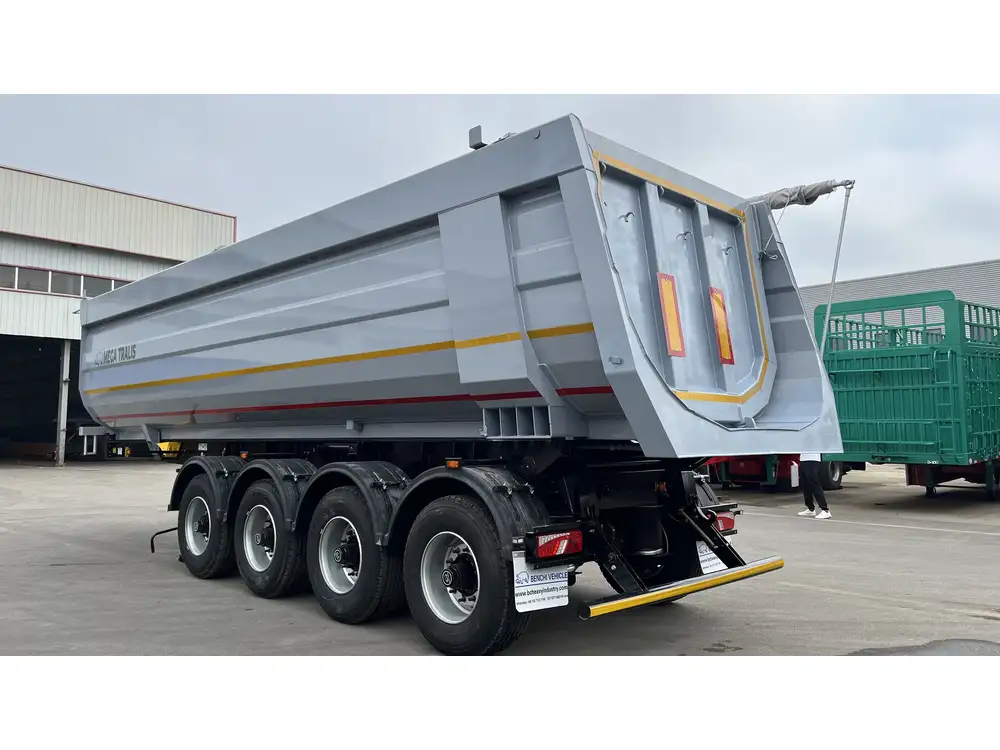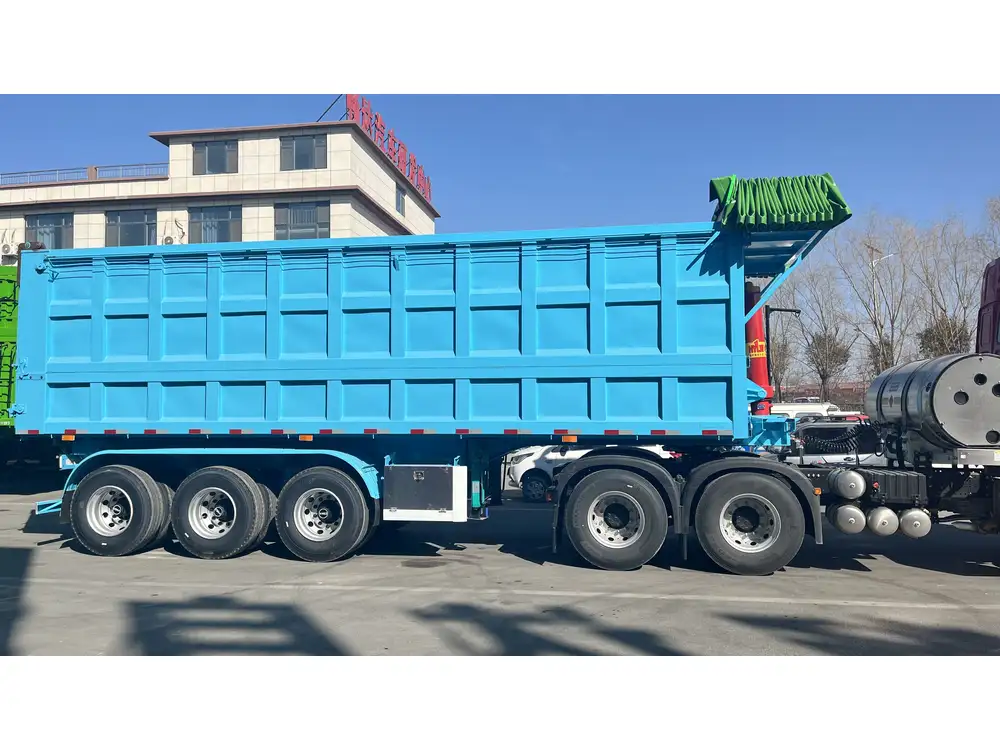When it comes to transporting goods, choosing the right trailer can make a significant difference in efficiency and cost-effectiveness. One of the pivotal metrics to consider is the internal volume of an enclosed semi-trailer, often measured in cubic feet. This article addresses crucial factors related to the cubic capacity of enclosed semi-trailers, providing you with a comprehensive understanding that will aid in making informed decisions.
What is an Enclosed Semi-Trailer?
An enclosed semi-trailer, also known as a box trailer, is a transport vehicle designed to carry goods, typically without exposure to the elements. Its solid walls provide enhanced protection against weather conditions, theft, and potential damages. These trailers come in various sizes, dimensions, and styles, catering flexibility to the diverse logistics needs of businesses.
Standard Dimensions of Enclosed Semi-Trailers
To ascertain the cubic measurement, we first need to delve into the standard dimensions of the enclosed semi-trailers.
| Type of Trailer | Length | Width | Height | Cubic Feet |
|---|---|---|---|---|
| 28-foot | 28 ft | 8.5 ft | 9 ft | 2,136 |
| 48-foot | 48 ft | 8.5 ft | 9 ft | 3,634 |
| 53-foot | 53 ft | 8.5 ft | 9 ft | 3,930 |

Breakdown of Dimensions
- Length: The total length from the front to the back of the trailer.
- Width: The distance across the trailer at its widest point.
- Height: Vertical distance from the floor to the ceiling of the trailer.
Calculating the Cubic Feet
The formula to calculate cubic feet is simple: [ \text{Cubic Feet} = \text{Length} \times \text{Width} \times \text{Height} ]
By applying this formula, we can derive the cubic capacity for various trailer lengths.
Example Calculation
Let’s consider a 53-foot enclosed semi-trailer:
- Length: 53 feet
- Width: 8.5 feet
- Height: 9 feet
Calculation: [ 53 \, \text{ft} \times 8.5 \, \text{ft} \times 9 \, \text{ft} = 4,042.5 \, \text{cubic feet} ]
However, in practical contexts, this number is often rounded. Thus, a 53-foot trailer may typically be advertised as having approximately 3,930 cubic feet of usable space.

Factors Affecting Usable Space in Enclosed Semi-Trailers
Interior Design: The layout, including shelving or specialized fittings, can significantly reduce the cubic space available for transporting cargo.
Weight Distribution: Proper balancing of cargo affects how much can be effectively loaded without compromising safety and legality. Overloading can impair trailer performance, affecting maneuvers and increasing wear and tear.
Access Points: The number and type of doors on an enclosed semi-trailer might vary, affecting how one can load and unload cargo efficiently.
Trailer Configuration: Different configurations (e.g., with lift gates or ramps) may alter the dimensions as well as functional usability of the space.
Common Sizes of Enclosed Semi-Trailers
28-foot Enclosed Semi-Trailer
Often used for shorter hauls, this configuration is suitable for small to medium-sized goods and is approximately 2,136 cubic feet.

48-foot Enclosed Semi-Trailer
This versatile size is widely used in the industry, striking a balance between capacity and maneuverability. The cubic capacity of approximately 3,634 cubic feet makes it ideal for transporting a range of goods.
53-foot Enclosed Semi-Trailer
The largest commonly used configuration, perfect for bulk shipments and larger cargo logistics, offering about 3,930 cubic feet of space.
Benefits of Using Enclosed Semi-Trailers
- Protection: Shielding goods from adverse weather and potential damage.
- Security: Securing cargo against theft or unauthorized access.
- Versatility: Suitable for a wide variety of goods, from automotive parts to furniture.

Understanding the Market Demand for Enclosed Semi-Trailers
Key Industry Drivers
The transportation and logistics industry is robustly evolving due to several factors:
- E-commerce Growth: A surge in e-commerce has heightened the demand for enclosed trailers that can safely transport goods.
- Regulatory Compliance: Strict regulations on transporting hazardous materials also amplify the need for secure, enclosed transport solutions.
- Global Trade: International logistics demand high-capacity trailers with reliable security features.
Market Trends
Sustainability Practices: Companies are increasingly seeking eco-friendly trailer options made from recyclable materials.
Technological Integration: Implementation of GPS and temperature controls in trailers ensures safety and compliance, enhancing the efficiency of the enclosed trailer market.
Customization: Manufacturers are responding to niche market demands for tailor-made trailers, further diversifying product offerings.

Assessing Your Needs
Determining the Right Size of Enclosed Semi-Trailer
Assess Your Cargo: Evaluate the dimensions and weight of your usual cargo. Prioritize space that equates with your needs without exceeding legal weight limits.
Consider Load Type: Fragile items may necessitate additional padding or shelves which might alter your choices.
Frequency of Use: For businesses with irregular shipping schedules, investing in larger capacity may be economically disadvantageous compared to renting trailers adequately sized for smaller loads.
Questions to Ponder
- How will the enclosed trailer facilitate your logistics operation?
- What additional features might you need (like climate control or specialized fittings) to handle your cargo?

Conclusion
Navigating the landscape of enclosed semi-trailers effectively involves understanding not just their capacity but also the multifaceted considerations impacting their usability. By grasping the specifics—dimensions, volume calculations, and the market’s demands—businesses can make strategic decisions that optimize transportation outcomes and enhance operational efficiency.
In summary, the internal volume of an enclosed semi-trailer can vastly vary based on its design and size—yet when calculated and utilized correctly, these trailers serve as quintessential assets in modern logistics. For anyone grappling with the question, “how many cubic feet is an enclosed semi-trailer?”, the answer undoubtedly influences operational success while navigating an industrious market landscape.



